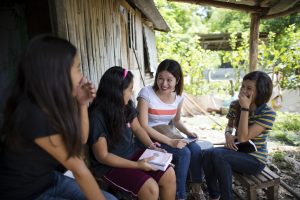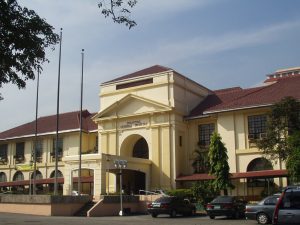The Philippine is an archipelago comprised of 7,641 islands. Due to a history of multiple settlements, there are over 170 languages and 2 official languages, Tagalog and English, spoken which will confuse even an expatriate living in the country for too long.
Tagalog is predominantly spoken by a third of the population and a second language for the rest. Although recognized as the official language it is less important in education because English is the medium of teaching in schools and recognized as the business language. This is reassuring for an expat family planning to relocate to the Philippines. You can talk to anyone on the streets in English and they’ll understand you but perhaps you won’t understand their response in “Taglish,” a mix of Tagalog and English words.
Top 10 Philippine Languages/Dialects
According to the Philippine Statistics Authority (PSA) here are the top 10 languages and dialects spoken in the Philippines:
| No. | Language/Dialect | Number of Households | Percent Distribution |
| 1 | Tagalog | 5,368,187 | 5.1 |
| 2 | Bisaya | 3,627,473 | 23.7 |
| 3 | Ilocano | 1,327,211 | 8.7 |
| 4 | Hiligaynon/Ilonggo | 1,065,767 | 7.0 |
| 5 | Bikol/Bicol | 705,147 | 4.6 |
| 6 | Waray | 419,899 | 2.7 |
| 7 | Kapampangan | 413,552 | 1.6 |
| 8 | Pangasinanense/Pangalatok | 237,181 | 1.3 |
| 9 | Maguindanao | 165,718 | 1.1 |
| 10 | Tausug | 151,277 | 1.0 |
Background on the Top 10 Philippine Languages/Dialects
For the curious expat who wants to know more of the Philippine languages and dialects check out this brief background that might help you.
- Tagalog. Derived from the word “Taga-ilog,” meaning “from the river.” Baybayin is the earliest writing system of Tagalog which underwent a major change upon the arrival of Spanish missionaries. Today, the Tagalog vocabulary comprise adopted Spanish words with a sprinkling of American, Chinese, Malay, and Muslim influence. Majority of Filipinos communicate in Tagalog, today there are twists added to the language like Taglish, Tagalog and English combined, Gay lingo, the language of gays, and Jejemon, use of symbols and characters in texting.
- Bisaya. It is the language spoken in the 6 main islands of Visaya namely: Panay, Negros, Cebu, Bohol, Leyte, and Samar. There are over 30 Bisaya ldialects, those with the most speakers are Hiligaynon, Aklanon, Cebuano, Capiznon, Kinaray-a, Bantoanon, Romblomanon, Waray, Surigaonon, and Cuyonon.
- Ilocano. The name Ilocano originated from “I” meaning “from,” “looc” connotes “bay,” and “ano” signifies “native of,” thus “people of the bay.” There are 2 main dialects, Northern and Southern. Primarily spoken in the provinces of La Union, Cagayan Valley, Babuyan, Mindoro, and Mindanao.
- Hiligaynon. The term means “people of the coast.” Spoken in the Visayan region, there are 3 varieties of Hiligaynon.
- Bikol. It is spoken in Bicol, Catanduanes, Masbate, Burias, and Ticao. There are 4 main dialects spoken in the region.
- Waray. The term means “none” or “nothing.” It is spoken in Biliran, Samar, Leyte, and Tacloban. There are 25 sub-dialects in Waray.
- Kapampangan. The word was derived from the root words ‘pampang” meaning “riverbank.” The language is spoken in the provinces of Pampanga, Bulacan, Bataan, Nueva Ecija, Aurora, and Tarlac.
- Pangalatok. It is derived from the word “asin” extracted from Pangasinan, the word for “salt,” combining words this means the “land of salt.” Speakers come from the provinces of Pangasinan, La Union, and Tarlac.
- Maguindanao. The language is spoken in the provinces of Maguindanao. North Cotabato, Sultan Kudarat, South Cotabato, Sarangani, Zamboanga del Sur, and Metro-Manila.
- Tausug. Also known a Suluk is coined from the words “tau” meaning “man” and “sug” meaning current or “People of the Current.” The language is spoken in the provinces of Sulu, Zamboanga, and Palawan.




